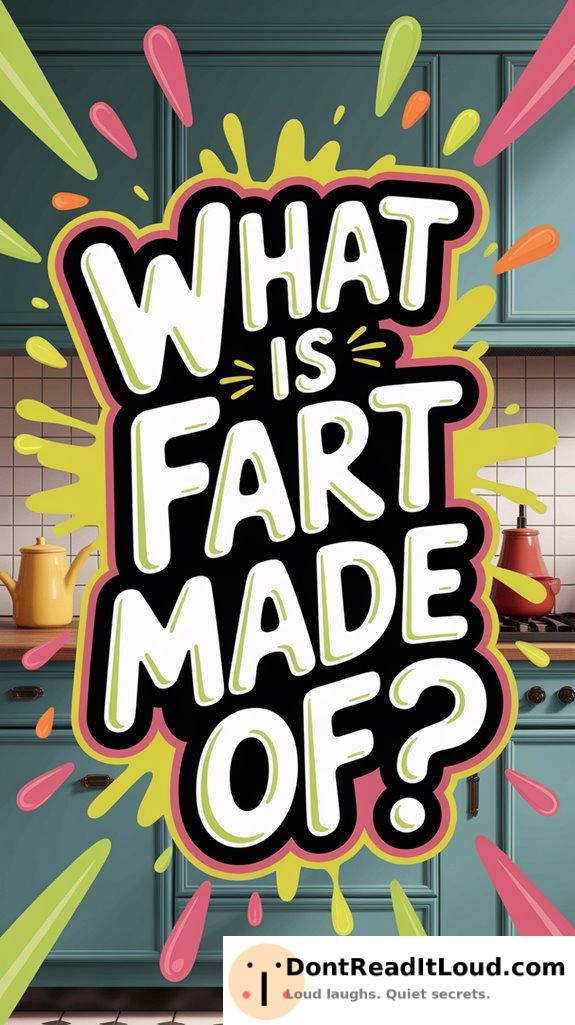
Farts are mostly made up of odorless gases: nitrogen, oxygen, carbon dioxide, hydrogen, and sometimes methane. Small amounts of sulfur compounds create the familiar fart smell—hydrogen sulfide gives a rotten egg odor, while methanethiol and dimethyl sulfide add vegetable-like notes. Gut bacteria produce these gases by breaking down undigested carbohydrates. If you want to know how your diet and gut microbes affect this process, keep exploring.

A fart, also known as flatus, consists mostly of odorless gases—primarily nitrogen, oxygen, carbon dioxide, hydrogen, and methane. The distinct smell comes from tiny amounts of sulfur-containing compounds, which make up less than 1% of the total gas but cause most of the odor. Hydrogen sulfide gives off a rotten egg smell and is the main culprit, while methanethiol and dimethyl sulfide add scents similar to rotting vegetables.
Gas forms in the digestive system mainly from swallowed air and the action of gut bacteria. Swallowed air introduces nitrogen and oxygen, while bacteria in the colon break down undigested carbs, creating hydrogen, carbon dioxide, and sometimes methane. Not everyone produces methane, as specific gut microbes are required for it. Methane and hydrogen are flammable components of flatus.
What you eat strongly affects how much gas you produce and how it smells. Foods high in fiber, like beans and whole grains, lead to more gas because gut bacteria ferment their carbohydrates. Eating sulfur-rich foods, such as eggs, broccoli, and garlic, tends to make farts smell worse by increasing sulfur compounds. A low-FODMAP diet can reduce fermentable carbs and may help with gas and odor.
Your gut microbiome—the mix of bacteria in your digestive tract—also has a big impact on gas production and its scent. Conditions like small intestinal bacterial overgrowth (SIBO) can increase both gas and odor. Each person’s unique mix of bacteria and archaea determines their individual levels of sulfur gases and methane.
Farts can be flammable because of the hydrogen and methane they contain. Hydrogen can make up half the gas, and methane up to 10%.
Most people fart 12 to 25 times a day, producing 0.6 to 1.8 liters of gas daily. Farts can move quickly, traveling about 10 feet per second. These details help explain the natural process behind what makes up a fart.
Conclusion
When you pass gas, you’re expelling a combination of gases formed in your digestive tract. This mix mainly includes nitrogen, oxygen, carbon dioxide, hydrogen, and sometimes methane. The smell comes from small amounts of sulfur compounds. Although it can feel awkward, farting is a normal and healthy process. So, if it happens, remember it’s a routine part of being human!



